QR Codes Continue Their Comeback! How Are They Being Used in Medicare Direct Marketing?
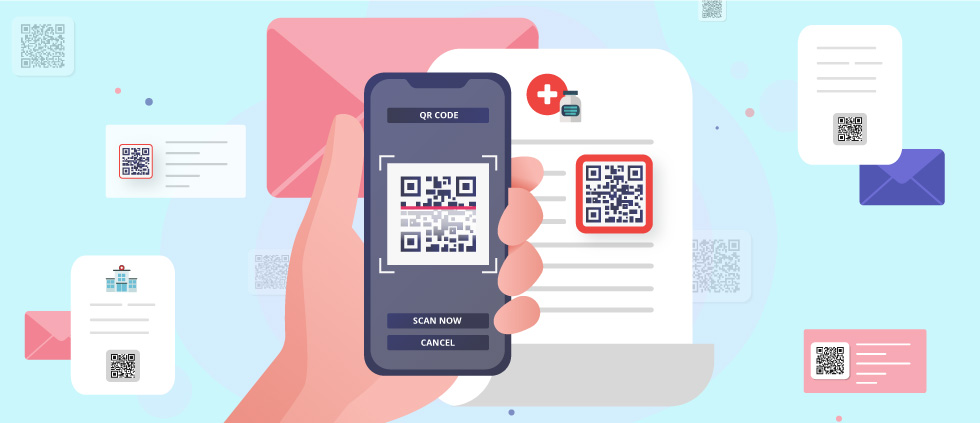
You see it everywhere – the QR code. Those little squares of funny blocks and dots continue making a surprise comeback. The QR code became popular again in 2020, when we started seeing the technology in restaurants, where they have replaced paper menus, in print ads, outdoor boards and beyond. And now they’re even showing up in multiple Super Bowl commercials. A QR code can be an easy and effective way to engage with your audience.
This resurgence is no surprise. Two things have led to the newfound popularity of the QR code. First, technology has made them more accessible. Both Apple and Android operating systems now support QR scanning, so users don’t have to download a special app just to read them. This shift in technology coincided with the second reason for their popularity: the desire for touch-free interactions due to health concerns during the COVID-19 pandemic.
We’ve noticed an upswing in the use of QR codes by practically every industry, including healthcare direct marketing. And for good reason:
- QR codes don’t take up a lot of room.
- They provide a frictionless way for the prospect to engage.
- They create an immediate conversion opportunity that doesn’t rely on a prospect having to remember or refer to a URL.
- They appeal to the fast-growing mobile-centric audience.
From a Medicare marketing perspective, a study from Broadridge found increased use of QR codes across all age groups – including Baby Boomers. This prompted us to look at how health insurers have recently incorporated QR codes into their Medicare direct mail marketing. *
Examples of QR codes used in Medicare direct mail marketing
We’ve seen QR codes serving several different functions in Medicare direct mail marketing. Many Medicare Advantage (MA) plans use them as a lead generation channel, driving to landing pages for an information kit or schedule a meeting including these client examples below from MVP Health Care and Geisinger Health Plan.
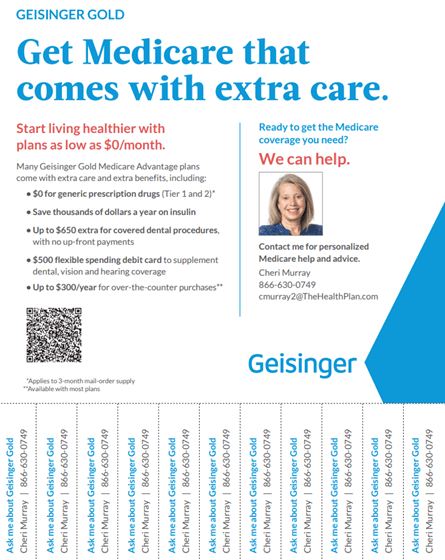
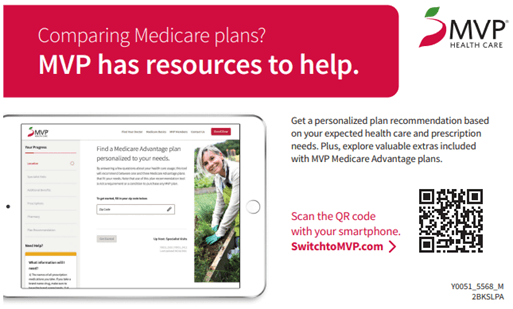
BlueCross BlueShield of Texas used a QR code to engage existing commercial plan members aging into Medicare by directing them to a landing page that offered updates for the upcoming plan year, helpful tips and other resources that might be needed ahead of AEP.
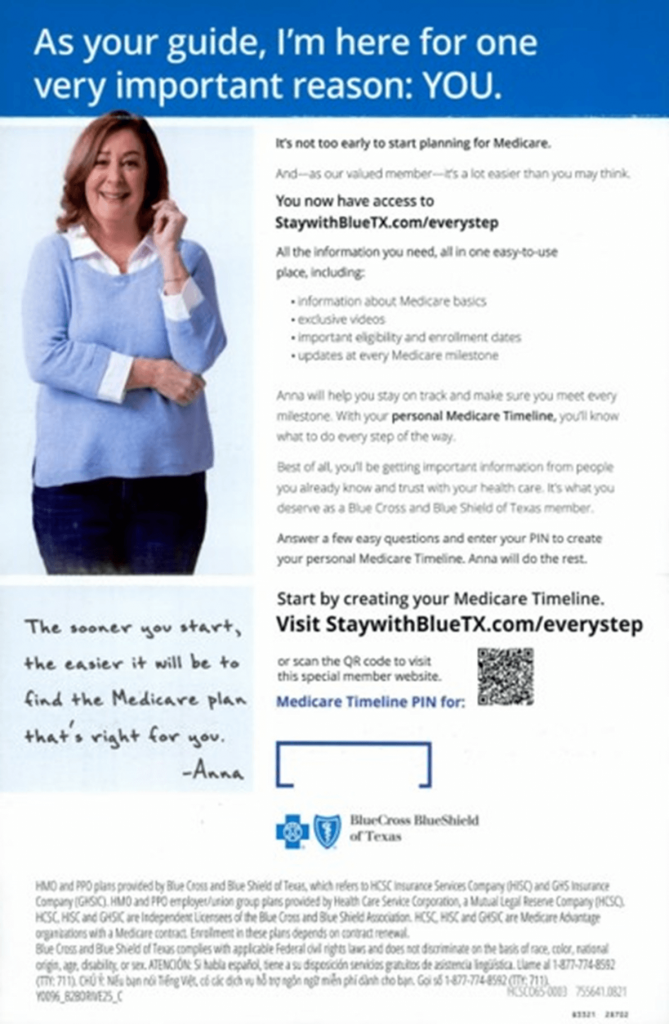
Aetna used a QR code to send New-to-Medicare prospects to an article on Social Security, Medicare and retirement savings and receive helpful information as they age in to Medicare.
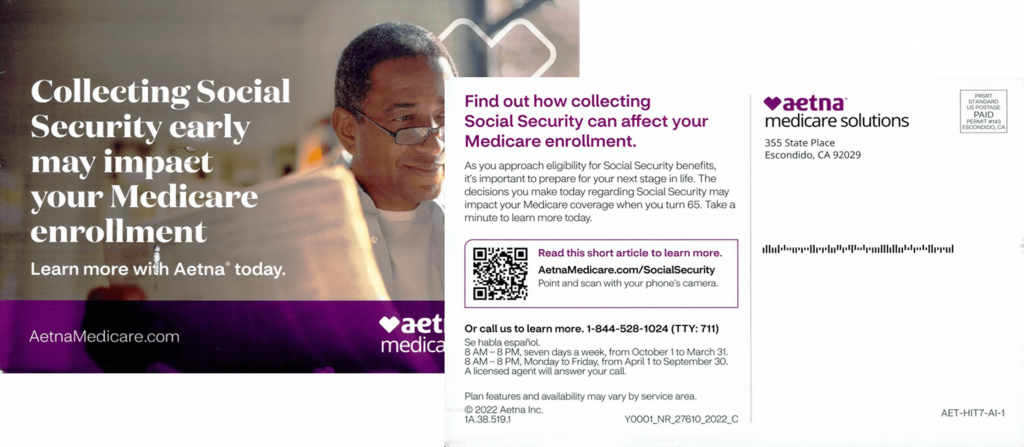
Humana used a QR code to inform members about new online classes available to them.
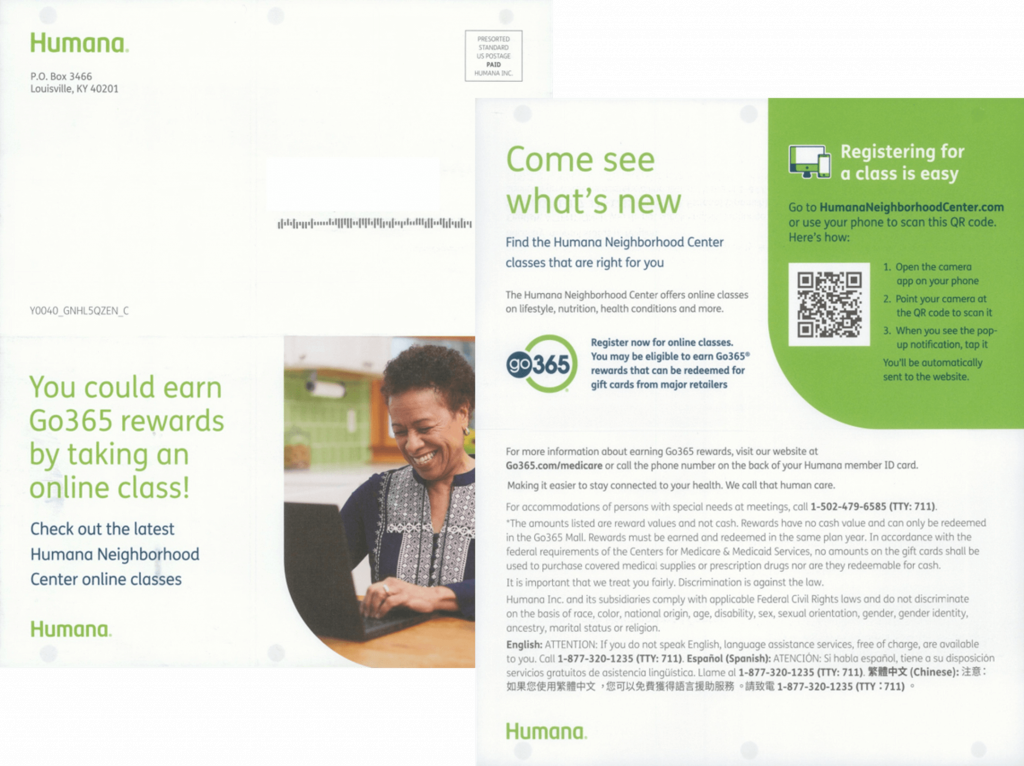
UnitedHealthcare used a QR code to encourage members to download their telehealth app and set up an account.

QR code best practices
Whether or not the QR code increases response/conversation rates remains to be seen. However, their growing popularity is quickly making them a conversion channel that cannot be ignored, and they also offer an additional path to response and conversion. With that in mind, we developed four QR code best practices to help maximize the effectiveness of this technology.
1. Make the QR code a practical size.
It can’t be so small that it’s hard to see or get in focus on a phone’s camera, but it also shouldn’t be so large that the user needs to stand back to get it to fit in their phone’s viewfinder. Typically, we recommend the size to be 1.25 inches for Medicare direct mail materials, but you can go down to an inch, if needed.
2. Don’t rely solely on the QR code.
Not everyone always has their phone handy or is willing to use it to access financial information. Always offer a URL along with the QR code.
3. Explain what the user will get by scanning QR code.
As with any CTA, it’s important the user understands why they should engage. Something as simple as “Scan the code to apply” can have a big impact on the code’s effectiveness.
4. Ensure a seamless transition.
Make sure the destination of the QR code immediately matches the description given in the CTA. Just as importantly, make sure the destination is mobile-friendly. Having a QR code open a hard-to-read desktop version of an application site is a sure way to lose any positive impact the QR code offered.
Like them or not, it looks like QR codes are here to stay, and we’ve only just begun to realize the new engagement potential they offer.
*Direct mail communications (screenshots) sourced from Mintel – a leading market intelligence agency and Media Logic client work.






